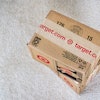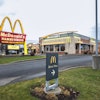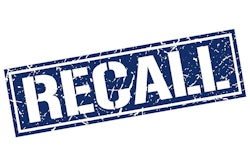
 William Makely
William MakelyA decade or so ago, a colleague and I were visiting the booth of a manufacturer of product inspection equipment at PACK EXPO. After we heard a presentation on the capabilities of a track and trace coding and verification system for pharmaceutical products, my colleague asked: “How long before this capability comes to the food industry?”
At the time, I was surprised by the question. Since then, I have realized how much foresight it showed.
Tracking And Tracing Require Different Tools
Food safety regulations (as embodied in the Food Safety Modernization Act (FSMA) and GFSI standards), protection of brand value and adequate management of financial liability risk all demand that food manufacturers today be accountable for the safety of their products and for developing and maintaining a plan to do their utmost to ensure that safety. This includes being able to track products forward to identify those that may need to be recalled, and to trace ingredients back through often-complex supply chains to their original supplier to identify sources of contamination that need to be eradicated in the future.
For both pharmaceutical companies and food producers, tracking the distribution of products is primarily accomplished by coding finished, packaged products. A pharmaceutical package is coded with date, lot and product ID codes, but also with a unique serialized code that protects it against diversion and counterfeiting and allows it to be tracked to even to the level of an individual pharmacy and consumer. Food products don’t need such serialization codes, since food products don’t face the challenging diversion and counterfeiting threats that pharma does. At least not yet. But they do need codes that will enable manufacturers and to alert distributors, retailers and consumers to recalls.
Tracing ingredients back through an extensive supply chain is another story. Pharmaceutical products are manufactured using ingredients usually sourced from highly controlled producers. Food product ingredients, on the other hand, are usually grown and harvested by sources ranging from local farms and ranches to operations in distant states or even foreign countries. They often pass through multiple distribution points before arriving at the plant where they will be finally processed or combined into finished products. Tracing a clear chain of custody can be daunting.
Currently, most companies in the food processing industry embrace the “one-up and one-back” (OUOB) track and trace system. This enables them to confirm the most recent source of their individual raw materials, and where their finished products are going next. While this offers a certain narrow degree of confidence, this process lacks clear visibility into the company’s entire supply chain.
While OUOB is the go-to traceability method for many food companies, supply chain end-to-end traceability would offer the ideal in safety assurance and transparency. In theory, if not practice, this is the direction toward which the food industry is moving, with what is best described as “deliberate speed.”
Food manufacturers and processors are increasingly recognizing that the value of being able to access the entire history of each product would be that companies could easily and reliably verify the safety practices of their suppliers, the origin and authenticity of their ingredients, and be made aware of potential allergens.
The Future Of Food Product Traceability
Is this “full visibility” achievable? Is it achievable cost-effectively? And — perhaps most importantly — without the threat of consequences, will everyone along the supply chain buy in?
Taking the last question first, FSMA was signed into law in early 2011, but it was years before its hard deadlines actually came into place. As I was writing articles about FSMA in the intervening years, it was clear that, while many of the companies I spoke with immediately began planning specific ways to meet the FSMA requirements, many others decided to “wait-and-see,” not convinced that FSMA would ever be finalized. That attitude was subsequently reinforced by the number of times FSMA deadlines were extended.
In spite of growing vocal concerns from consumers about food safety, and the obvious benefits that complying with FSMA would bring to the companies themselves in terms of improved quality assurance and brand value protection, many companies still dragged their feet until the last minute.
Should we expect that companies today will enthusiastically jump on the “end-to-end traceability” bandwagon?
As to the procedural challenge — how to actually trace products as they progress through the supply chain — numerous possibilities have been advanced.
Various technologies are being explored that could use DNA, genetic, molecular or radioisotope tracking to trace foods as they move through the supply chain. Perfecting the ability to turn this raw data into meaningful and actionable information will not be easy or quick, but it is progressing, according to industry sources.
Using such data is the solution we seek: One that gives us end-to-end traceability of the foods we eat as they are gathered and converted into finished products — a longer and clearer view of our food supply than today’s OUOB.
William Makely is a contributing writer for Food Manufacturing.





















